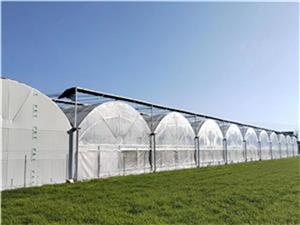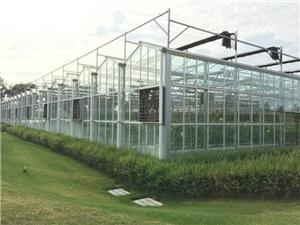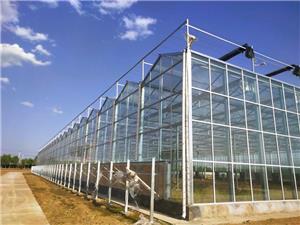Polycarbonate panel greenhouse
Introduction to Glass Greenhouses
The charm of glass greenhouses lies in their seamless integration of natural beauty with innovative architectural design. They are not only practical for gardening enthusiasts, but also can become an astonishing focal point in any landscape. With advancements in technology and design, glass greenhouses have evolved into multi-functional spaces that not only offer the best growing conditions but also enhance the overall aesthetic appeal of your property.
2. Benefits of Glass Greenhouses
Glass greenhouses have numerous advantages and are an excellent choice for gardeners and garden enthusiasts.
**Natural light**: The transparency of glass enables the maximum utilization of sunlight, which is crucial for plant growth. This feature helps create the optimal environment for photosynthesis.
**Temperature regulation**: Glass greenhouses can be designed to maintain a stable temperature, ensuring that plants can thrive regardless of the external weather conditions.
**Aesthetics**: The smooth appearance of the glass structure can add an elegant touch to any garden or backyard, combining beauty with functionality.
**Durability**: High-quality glass can resist weather factors, ensuring a long lifespan and reducing the need for frequent repairs.
3. Innovative design concepts
In the field of glass greenhouse construction, creativity is boundless. The emergence of some innovative design concepts has enhanced the functionality and aesthetics of these structures.
3.1. Biophilic Design Approach
Sustainable design in nature-friendly architecture focuses on integrating natural elements into buildings. For glass greenhouses, this might involve embedding plants directly into the structure or using organic shapes that mimic nature. This approach not only creates a harmonious environment but also enhances the well-being of people interacting with the space.
3.2. Sustainable Characteristics of Modern Glass Greenhouses
Sustainability is receiving increasing attention in today's world, and integrating environmental-friendly features into glass greenhouses is becoming increasingly popular. The available options include rainwater collection systems, solar panels, and energy-efficient glass. These features not only reduce the impact on the environment but also lead to long-term cost savings.
3.3. Multi-functional Spaces
Modern glass greenhouses are designed as multi-functional spaces, capable of meeting various purposes. From potting sheds to leisure areas, these structures can accommodate various activities, allowing the owners to make the most of the space.
4. Materials used in the construction of glass greenhouses
The choice of materials is of vital importance for the construction and lifespan of a glass greenhouse.
**Glass types**: Common glass types include tempered glass, polycarbonate sheets, and laminated glass. Each type has its own unique advantages, ranging from enhanced insulation properties to resistance to shattering.
**Frame materials**: The frame can be made of aluminum, steel, or wood. Aluminum is lightweight and rust-resistant, while wooden frames have a traditional aesthetic. Steel is durable but may require additional防腐处理.
**Foundation materials**: Any greenhouse requires a solid foundation. Options include concrete, gravel, or bricks, which provide stability and ensure good drainage.
5. Popular styles of glass greenhouses
In terms of style, glass greenhouses can vary greatly, and each type has its own unique advantages.
5.1. Contemporary Greenhouses
Modern greenhouses are characterized by smooth lines and simple designs, usually featuring wide glass panels that allow one to enjoy the surrounding scenery without obstruction. These designs emphasize functionality and modern aesthetics, and are highly favored by urban gardening enthusiasts.
5.2. Victorian-style Architecture
The Victorian-style greenhouse is renowned for its elaborate details and classical charm. These buildings are typically characterized by exquisite ironwork and pointed roofs, evoking the image of historic botanical gardens. They provide an elegant backdrop for any garden and can create a retro atmosphere.
5.3. Single-slope greenhouse
Single-slope greenhouses are attached to existing building structures, such as houses or sheds. This design is highly suitable for maximizing the use of space as it can utilize the walls of adjacent buildings as support. Single-slope greenhouses are particularly suitable for small gardens or urban environments.
6. Key characteristics to consider
When planning a glass greenhouse, several key features should be taken into consideration to ensure optimal plant growth and user experience.
6.1. Ventilation and Climate Control
Proper ventilation is crucial for maintaining the climate balance in greenhouses. Installing automatic vents, exhaust fans, and side windows helps regulate temperature and humidity, prevent overheating, and promote healthy plant growth.
6.2. Energy Efficiency Solutions
To maximize energy efficiency, consider installing double-glazed panels or thermal curtains. These features help maintain a constant temperature while minimizing energy consumption, making your greenhouse more sustainable.
7. Maintenance Tips for Glass Greenhouses
To keep the glass greenhouse in its best condition, regular maintenance is necessary. Here are some important tips:
**Regular cleaning**: To ensure the best sunlight penetration, please clean the glass panels regularly. Dust and dirt can block the sunlight and hinder plant growth.
**Check for damage**: Regularly inspect the glass and frame for cracks or leaks. Prompt repairs can prevent more significant problems from arising later.
**Monitor temperature and humidity**: Use a thermometer and hygrometer to monitor the internal environment of the greenhouse. Adjust the ventilation and heating systems as needed to create a healthy growing environment for the plants.
8. Frequently Asked Questions (FAQ)
Which type of glass is most suitable for use in a greenhouse?
The best type of glass depends on your specific needs. Tempered glass combines durability and safety, while polycarbonate sheets have excellent heat insulation properties.
2. How much sunlight does the greenhouse need?
To achieve the best growth results for the plants, the greenhouse should receive at least 6 hours of direct sunlight every day.
3. Can I grow vegetables in a glass greenhouse?
Yes, glass greenhouses are very suitable for growing various vegetables because they provide the controlled environment necessary for healthy growth.
4. How to heat a glass greenhouse in winter?
The heating methods include electric heaters, gas heaters and underfloor heating systems. The insulation of the greenhouse also helps to retain heat.
5. Is it worth investing in a glass greenhouse?
Yes, glass greenhouses are a worthwhile investment due to their durability, aesthetic appeal, and the potential for year-round plant cultivation.
9. Conclusion
The innovative design of the glass greenhouse perfectly combines functionality, sustainability and aesthetics. By choosing the right materials, incorporating unique design elements and considering key features, you can create an astonishing greenhouse that provides shelter for your plants and adds a touch of brightness to your property. Whether you choose a modern-style greenhouse, a Victorian-style building, or a practical single-slope roof design, the possibilities are endless. Embrace the creativity and potential of the glass greenhouse and bring inspiration to your next project.
As a covering material for greenhouses, PC solar panels have many advantages over glass greenhouses and film greenhouses. Compared with glass greenhouses, PC solar panel greenhouses are more cost-effective and have higher energy efficiency. Their lifespan is also longer than that of film greenhouses, and they have better insulation performance. 2
The PC solar panels are renowned for their high strength, durability, flame retardancy and cleanliness. They are not affected by ultraviolet radiation, have a long service life, and the warranty period for new materials lasts up to ten years. They possess excellent transparency and optical quality, as well as characteristics such as impact resistance, sound insulation, heat insulation, non-combustibility and anti-aging. These panels represent a high-tech, efficient, energy-saving and environmentally friendly plastic material. 3
Most solar panel greenhouses adopt the Venlo structure, which is characterized by a stable structure, smooth lines, excellent heat insulation performance and simple construction. 4
The PC solar panel greenhouse has excellent light transmittance and low thermal conductivity. These panels are lightweight but have high tensile strength. With a simple steel frame structure, the requirements for resisting snow and wind can be met, and the appearance is also beautiful. 5
The materials used in the PC solar panel greenhouse can be recycled, reducing the need for repeated construction and investment, saving resources and protecting the environment.




